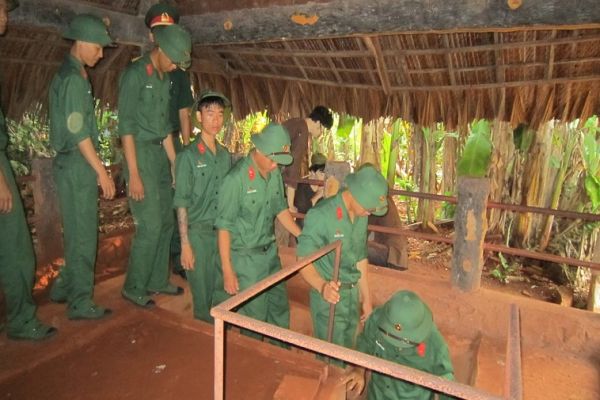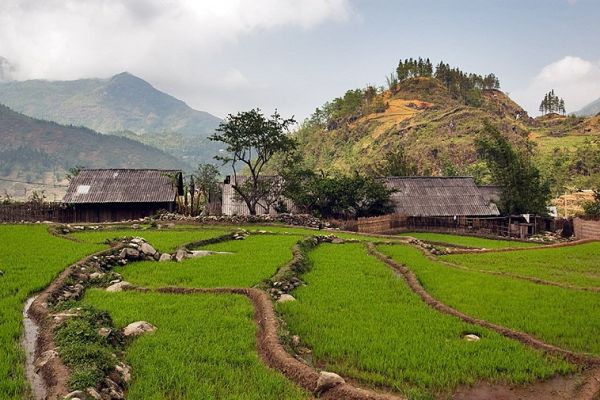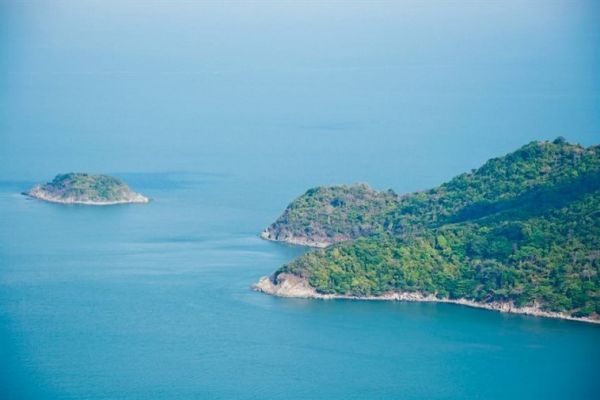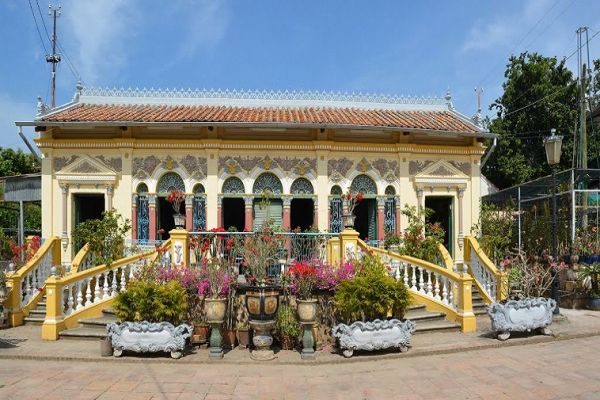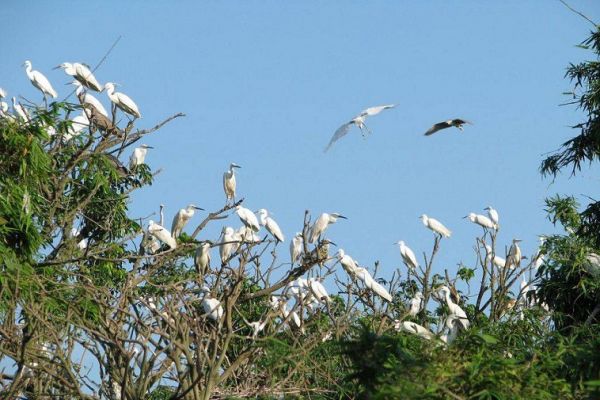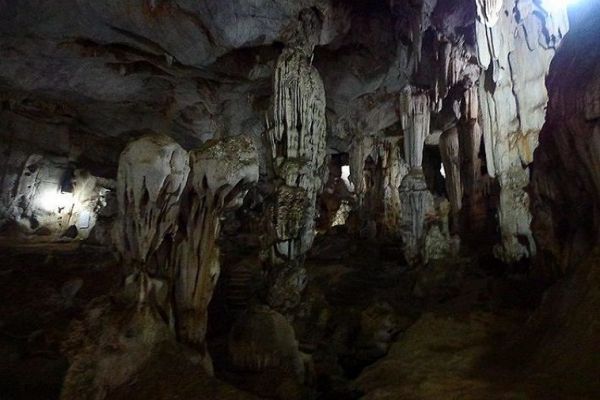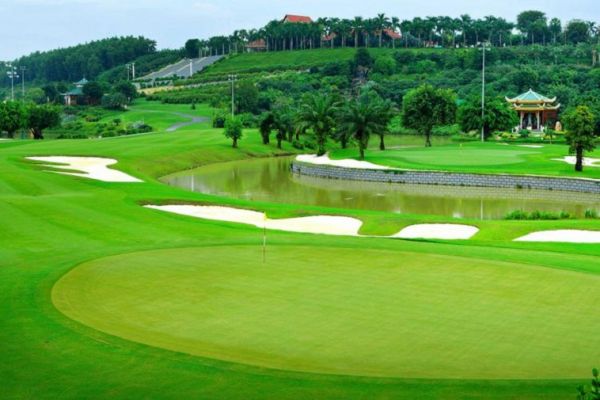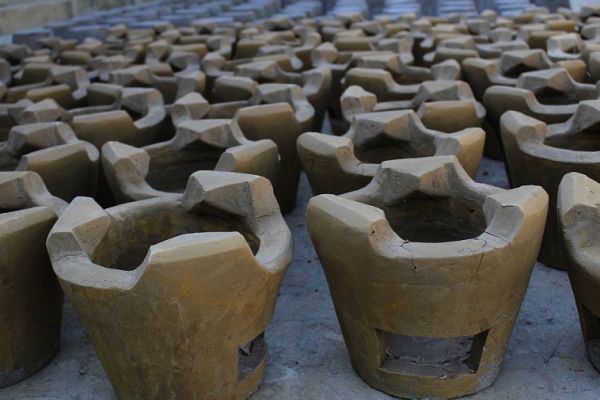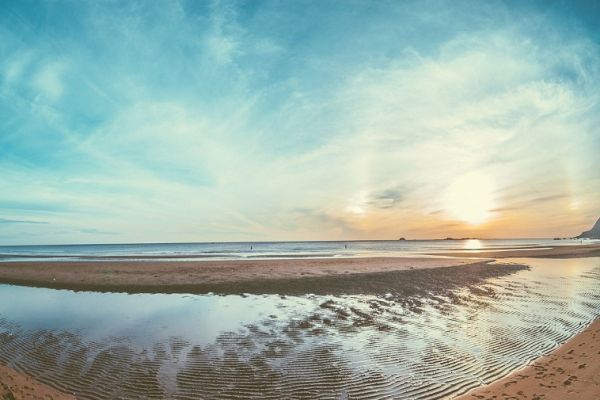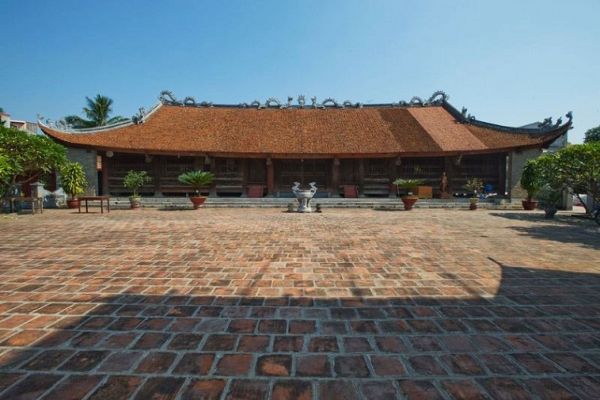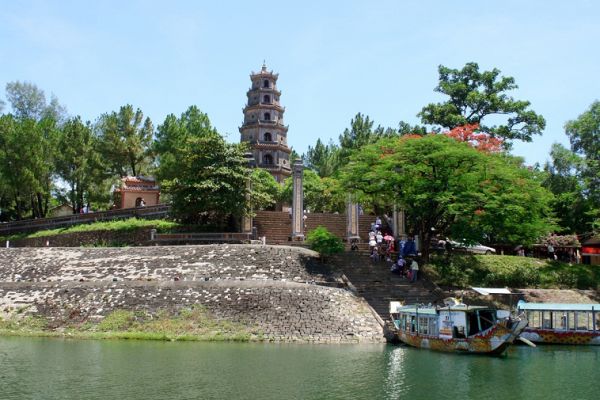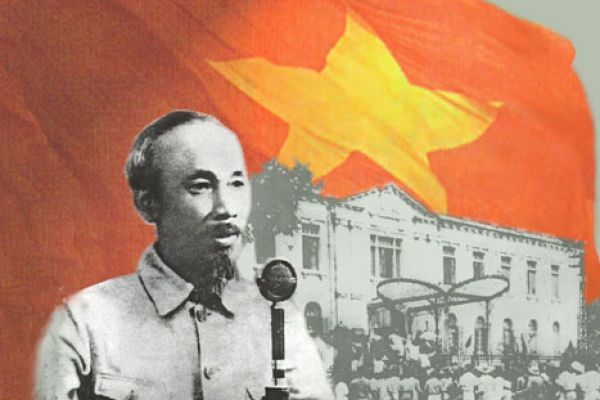The cape of Ca Mau is located in Ngoc Hien district and 118km away from the center of Ca Mau city. The cape was discovered at the end of the 17th century. As it is the residential area of three ethnic groups: Kinh, Hoa, Khmer.

From Nam Can district, visitors take a boat to travel 60 kilometres upstream to tread the sacred soil of the motherland, facing the East Sea and the western world.
Floating along the river, travelers may come across canoes transporting goods to remote areas of Nam Can. These floating vendors sell everything from needles, yarn and vegetables to luxury items. The price is not higher than the city, and can be paid later.

The natural scenery full of mangrove forests featuring a plethora of birds, wild animals, and fishes gives Ca Mau a very distinctive beauty of a newly discovered land: mysterious and fresh at the same time. With a diverse system of wild plants and animals, the giant mangrove forests are surely the most noticeable feature of this land, as they are the intersection of the East Sea and the West Sea. As the area of the forest expand greatly on a yearly basis, the most precious types of plant also develop, benefiting the wild animals residing there. It is estimated that there are over 240 types of plants, 36 species of animal, 194 species of bird, and 260 species of fish, with many endangered species.

From the Cape of Ca Mau, one can see the Hon Khoai which is 20km away from mainland. This is a huge cluster of beautiful islands such as Hon Tuong, Hon Sao, Hon Kho, Hon Lon, Hon Doi Moi, etc., among which the Hon Khoai Island is the biggest and highest with a width of 4km2 and a height of 318m.

